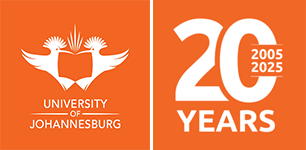Undergraduate Programmes
BEng Civil Engineering Science Programme (B6CISQ)
The qualification aims to develop an engineering intellectual who can identify, assess, and formulate the engineering needs of the Society at large, and research and solve the identified engineering problems creatively and innovatively, by applying scientific, mathematical, engineering, economic and other relevant principles and methods.
The qualification prepares students for an engineering science, design and project-based career through fundamental understanding, use and appropriate application of engineering methods, skills, tools, and information technology. The qualification also provides a platform for lifelong learning.
Admission Requirements

The following minimum subject requirements will apply for admission:
- Minimum Total APS: 32
| Subject minimum APS | |
|---|---|
| English | 5 |
| Mathematics | 5 |
| Physical Science | 5 |
- Applicants will be required to complete a PsyCaD assessment obtaining an unconditional recommendation;
- Recommendation by the relevant Head of Department;
- Senate Discretionary Conditional Admission for applicants who have successfully completed the ASC, provided that the applicant meets all the requirements;
- Admission will also be based on the availability of space according to the Enrolment Management Plan of UJ as approved by the Department of Higher Education and Training.
First Year
| Module | Module Code | Pre-requisite | Department offering |
|---|---|---|---|
| Applied Mathematics 1A | APM01A1 | Mathematics Grade 12 – APS 5 | Mathematics and Applied Mathematics |
| Chemistry 1A | CEM01A1 | Physical Science Grade 12 – APS 5 | Chemistry |
| Engineering Mathematics 1A | MATENA1 | Mathematics Grade 12 – APS 5 | Mathematics and Applied Mathematics |
| Engineering Physics 1A | PHYE0A1 | Mathematics Grade 12 – APS 5 | Physics |
| Introduction to Engineering Design 1A | IINEEA1 | Mathematics Grade 12 – APS 5 |
| Module | Module Code | Pre-requisite | Department offering |
|---|---|---|---|
| Applied Mathematics 1B | APM01B1 | APM01A1 | Mathematics and Applied Mathematics |
| Concrete Technology1B | BTKCIB1 | CEM01A1 | Civil Engineering Science |
| Draughting for Civil Engineers 1B | DRGCIB1 | Civil Engineering Science | |
| Electrotechnics 1B | ETNEEB1 | Electrical and Electronics Engineering Science | |
| Engineering Mathematics 1B | MATENB1 | MATENA1 | Mathematics and Applied Mathematics |
| Engineering Physics 1B | PHYE0B1 | PHYE0A1 | Physics |
Second Year
| Module | Module Code | Pre-requisite | Department offering |
|---|---|---|---|
| Applied Mathematics 2A | APM02A2 | APM01B1, MATENB1 | Mathematics and Applied Mathematics |
| Engineering Mathematics 2A2 | MATECA2 | MATENA1, MATENB1 | Mathematics and Applied Mathematics |
| Engineering Mathematics 2A1 | MATEAA2 | MATENA1, MATENB1 | Mathematics and Applied Mathematics |
| Applied Mechanics 2A | MGACIA2/MGA2A11 | MATENA1, MATENB1, IINEEA1, PHYEOB1 | Civil Engineering Science |
| Geology 1A | GLG01A1 | Geology | |
| Fluid Mechanics 2A | STRCIA2/STR2A11 | MATENB1 | Civil Engineering Science |
| Modelling 2A | MODEEA2 |
| Module | Module Code | Pre-requisite | Department offering |
|---|---|---|---|
| Applied Mathematics 2B | APM02B2 | MGACIA2/MGA2A11 | Mathematics and Applied Mathematics |
| Engineering Mathematics 2B2 | MATEAB2 | Mathematics and Applied Mathematics | |
| Engineering Mathematics 2B1 | MATECB2 | Mathematics and Applied Mathematics | |
| Strength of Materials for Civil Engineers 2B | SMCCIB2/SMC2B21 | MGA2A11, MATECA2, MATEAA2 | Civil Engineering Science |
| Heritage Assessment 3B | HTA3BB3/HTA3B02 | ||
| Environmental Management for Engineers 2B | ENME0B2/ENV3B01 | ||
| Communications 2B/3B | COMOB22/COM2B21 | Writing Centre for Faculty of Engineering and the Built Environment |
Third Year
| Module | Module Code | Pre-requisite | Department offering |
|---|---|---|---|
| Geotechnical Engineering 3A | GTGCIA3/GTG3A11 | MATECB2 MATEAB2 APM02B2 | Civil Engineering Science |
| Structural Engineering 3A | SUSCIA3/SUS3A11 | MATECB2, MATEAB2, APMCIB2, SMCCIB2, MGACIA2 | Civil Engineering Science |
| Hydraulic Engineering 3A | HMGCIA3/HMG3A11 | MATECA2, STRCIA2, APM02A2 | Civil Engineering Science |
| Statistics for Engineers 3A | STAE0A3/STE3A01 | Mathematics and Applied Mathematics | |
| African Insights | ANFISA1 | Online | |
| Transportation Engineering 3A | VVICIA3/VVI3A11 | MATECB1, MATEAB2, APM02B2 | Civil Engineering Science |
| Module | Module Code | Pre-requisite | Department offering |
|---|---|---|---|
| Geotechnical Engineering 3B | GTGCIB3/GTG3B21 | GTG3A11/GTGCIA3, GLG01A1 | Civil Engineering Science |
| Structural Engineering 3B | SUSCIB3/SUS3B21 | SUS3A21/SUSCIA3 | Civil Engineering Science |
| Hydraulic Engineering 3B | HMGCIB3/HMG3B21 | HMG3A11/HMGCIA3 | Civil Engineering Science |
| Transportation 3B | VVICIB3/VVICIB3 | VVI3A11/VVICIA3, STAEOA3 | Civil Engineering Science |
| Project Management 3B | PJBCIB3/PJB3B21 | Civil Engineering Science | |
| Surveying 3B | OPMCIB3/OPM3B21 | Presented during the first two weeks of the winter recess | Civil Engineering Science |
Fourth Year
| Module | Module Code | Pre-requisite | Department offering |
|---|---|---|---|
| Geotechnical Engineering 4A | GTGCIA4/GTG4A11 | GTG3A11/GTGCIA3, GTG3B21/GTGCIB3 | Civil Engineering Science |
| Project Management 4A11 | PJBCIA4/PJB4A11 | PJBCIB3, GTGCIB3, HMGCIB3, SUSCIB3, VVICIB3) | Civil Engineering Science |
| Structural Engineering 4A11 | SUSCIA4/SUS4A11 | SUS3B21/SUSCIB3 | Civil Engineering Science |
| Urban Hydraulics 4A11 | SDICIA4/SDI4A11 | HMGCIA3/HMG3A11 | Civil Engineering Science |
| Urban Development Studies 4A11 | UDSCIA/UDS4A11 | VVICIB3 | Civil Engineering Science |
| Structural Engineering 4A12 | SUSCIA2/SUS4A12 | SUS3B21/SUSCIB3 | Civil Engineering Science |
| Module | Module Code | Pre-requisite | Department offering |
|---|---|---|---|
| Civil Design 4B21 | OWSCIB4/OWS4B21 | All 3rd year modules and 1st semester 4th year modules. | Civil Engineering Science |
| Civil Project Investigation 4B21 | PJSCIB4 | All 3rd year modules and 1st semester 4th year modules. | Civil Engineering Science |
| Civil Professional Practice 4B21 | CPPCIB4/CPP4B21 | Registration for this module may only occur in parallel with registration for OWSCIB4 Civil Design 4B21 | Civil Engineering Science |
| Legal Applications in Engineering Practice 4B | RTICIB4/RTI4B21 | Law |





